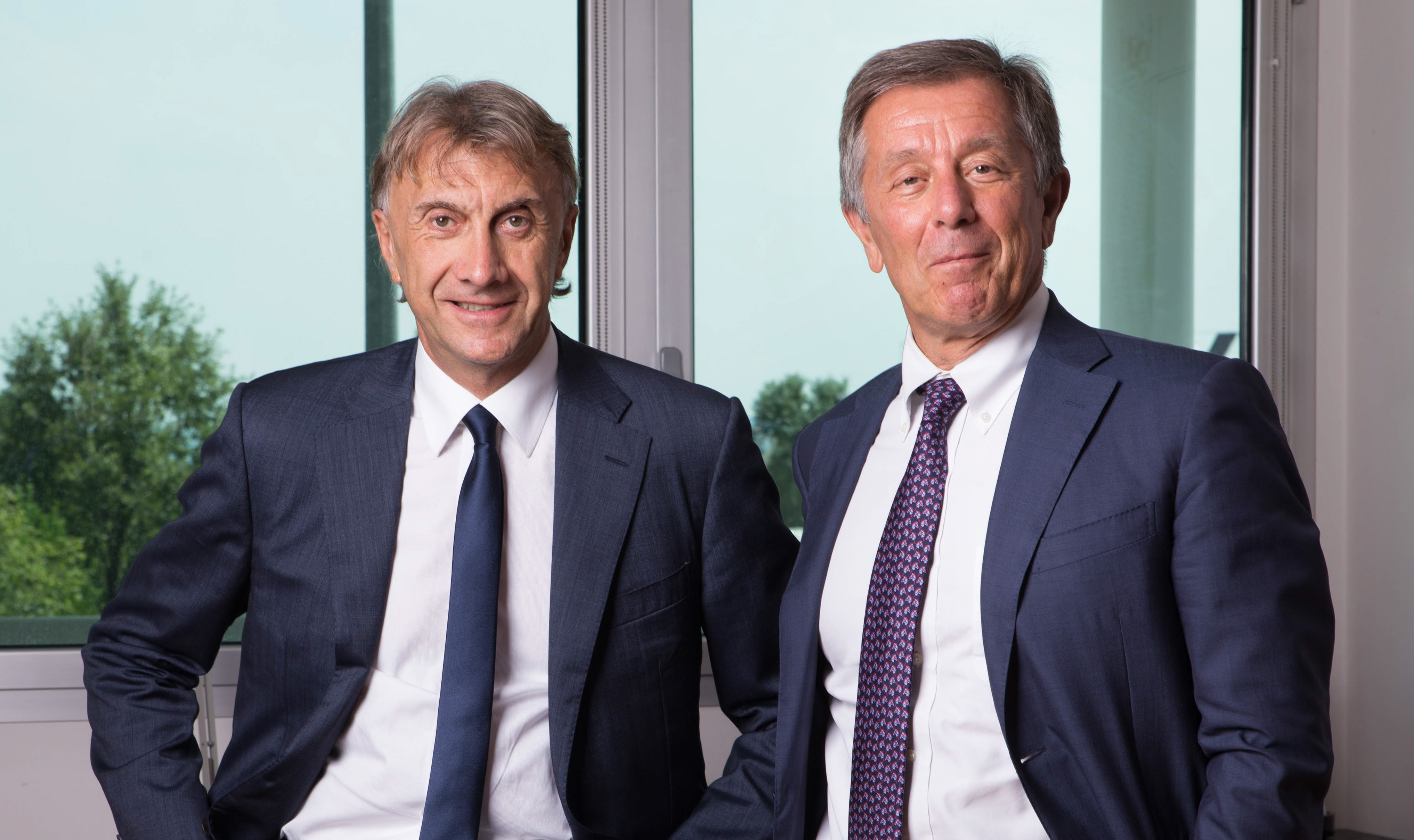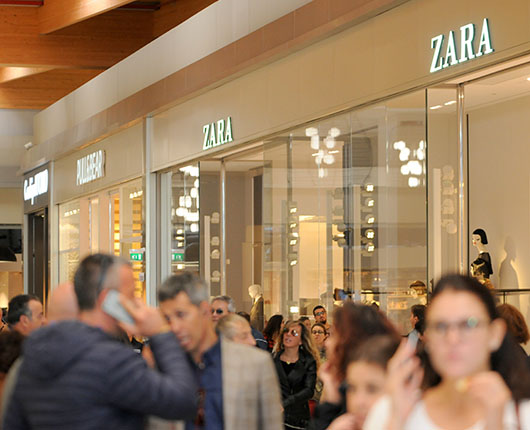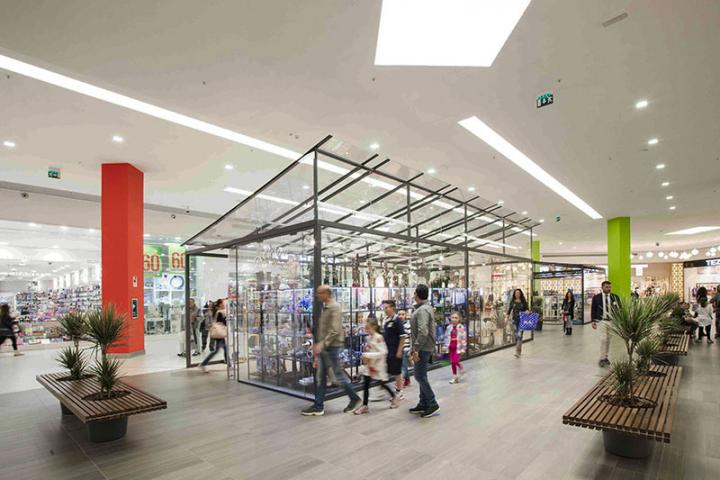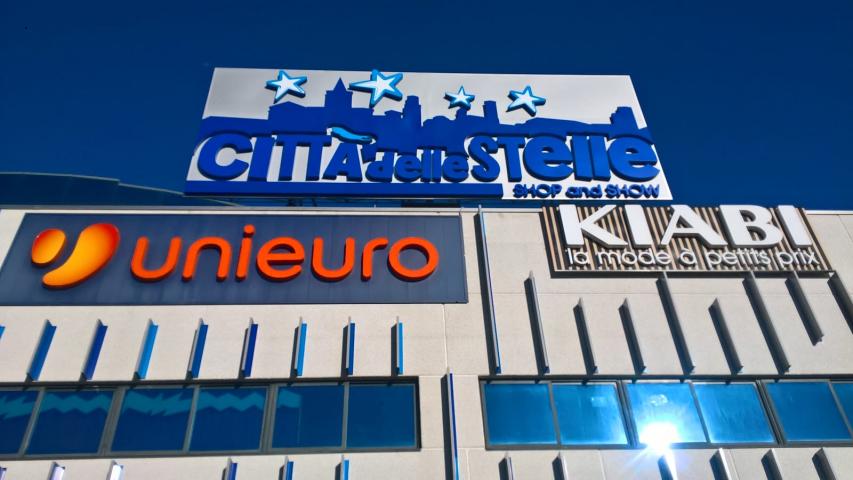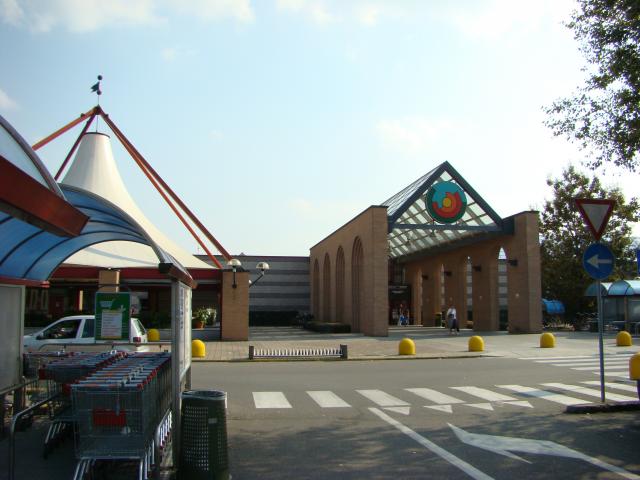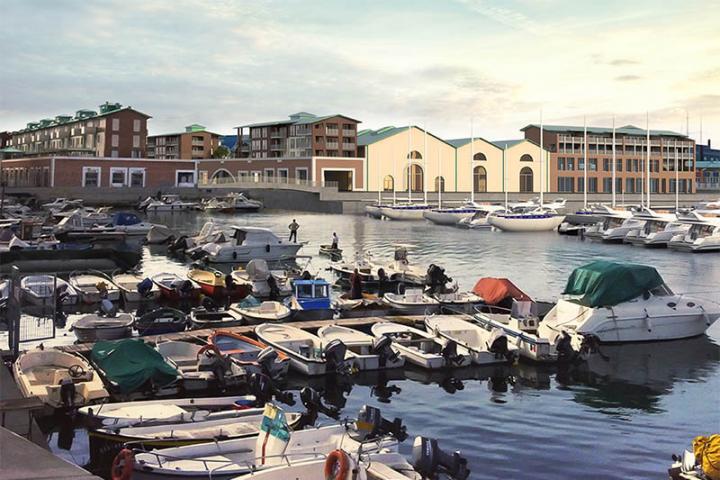Letter to the shareholders
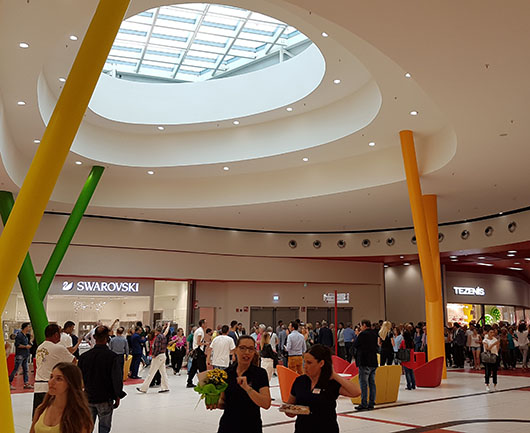
Dear Shareholders,
The results presented in your Company’s 2017 Annual Report have never been achieved before. Not only have the record performances recorded in 2016 been surpassed, but it is clear that IGD is well on track to deliver on the Business Plan 2016-2018. A few targets for the end of the plan have basically already been reached.
The Group’s net profit reached €86.5 million, an increase of 26.5% with respect to 2016. The key indicator for understanding the efficiency of a real estate company, the core business Funds from Operations (FFO), reached €65.6 million in 2017, an increase of 21.7% against the prior year: we, therefore, exceeded the full year guidance for FFO of +20% announced in August in the wake of the encouraging results posted in the first half.
The 5.8% increase in rental income and revenue from the real estate business, fueled an increase in core business EBITDA of 6.7%, attributable also to rigorous control of operating costs. The core business EBITDA Margin came to 69.7%, 40 basis points higher than the 69.3% recorded in 2016.

Centro Esp, Ravenna
IGD’s real estate portfolio had an appraised fair value at year-end 2017 of €2,228 million. This figure, around 50% higher than the year-end 2016 appraisals, confirms IGD’s role as a key player in the Italian retail real estate sector. Even though yield compression did not help to sustain the fair value increase of our assets to the extent that it did in 2016, in 2017 the portfolio did benefit from two of the factors driving its value. Firstly, the expanded perimeter linked to the ESP extension, inaugurated on 1 June 2017 after a total investment of €51 million, made over several years, and the Maremà center in Grosseto; secondly, the significant contribution of the like-for-like perimeter linked to the higher fair value of a few of IGD’s key malls which each were valued at more than €70 million. The biggest increases were reported by the properties where restyling and new fit-outs, as well as extensions of the leasable space, were recently completed.
Our portfolio has always been characterized by its balanced structure, which allows us to have a very low risk profile: IGD’s shopping centers are, in fact, distributed throughout Italy, typically along main thoroughfares near cities, and well positioned in their primary catchment areas. The medium size gives us the flexibility and responsiveness needed to quickly rethink the spaces inside each center based on retailers’ changing needs, as well as make changes to the tenant mix.

Centro Città delle Stelle, Ascoli Piceno
In order to maintain a high level of occupancy and create the conditions needed to grow retailers’ revenue, in 2017 we also continued to work on ensuring the quality of our portfolio and the appeal of each center. We introduced innovative international brands, including when this required substantial redistribution of the space, we increased our focus on food courts and added services like gyms, dental studios and cinemas which generate traffic that is not necessarily linked to shopping needs. In the wake of the success of Le Porte di Napoli, at the Città delle Stelle shopping center we also created new value by downsizing the hypermarket and creating a new piazza that is connected to the newly expanded mall. In 2017 the big international brands also requested more space with a view to providing its customers with a richer shopping experience and highlighting the role of the store as a show-room.
The operating indicators confirm the fact that this work was successful: in 2017 the occupancy continued to be very high in Italy (coming in at 96.8%), while rising considerably in Romania where it reached 96.4%. The average upside on the new leases signed with mall retailers in Italy came to 4.9% in 2017, while the average upside on renewals in Romania reached 2.1%. Not only: we succeeded in making the most of the opportunity to redesign the merchandising mix and include tenants with the best sales performances through rotation during the turnover phase which involved 5.4% of the tenants in Italy and 32.7% of the Winmarkt tenants.
The results posted in 2017 show that the strategic guidelines for the second year of the three-year business plans were adhered to and increase the visibility of achieving the targets for 2018. The results for 2017 should, however, not be taken for granted: they were achieved in what was undoubtedly a favorable economic environment but, at the same time, in a context which was much more complicated with respect to the past, given the challenges linked to the emerging models of consumption, particularly with the younger generation, and the new needs of the large omni-channel retailers, who are increasingly more interested in integrating the physical store experience with online shopping.
Looking again at the consolidated income statement for 2017, the investments made in maintaining the high quality of the portfolio fueled a €23.9 million rise in fair value. This figure is even more impressive if we consider that it is even higher than the increase of €19.6 million recorded in 2016.
If the operating results testify to the validity of the asset management and commercial choices made, financial management was also key to creating value in 2017. In line with the strategies outlined in the Business Plan, we worked to maintain a good level of debt, to optimize access to credit and to contain the cost of debt.
The results of these steps can be seen, firstly, in the Loan-to-Value which came to 47.4% at year-end 2017 versus 48.3% at year-end 2016. The LTV was once again below the 50% level, which is key to ensuring that IGD’s debt will continue to be rated investment grade. In 2017 the Interest Cover Ratio (ratio of EBITDA to financial expense) was strengthened further, coming in at 2.93x. Lastly, we also succeeded in reducing the average cost of debt from the 3.3% recorded in 2016 to 2.82%.
Based on the positive performances recorded in the year, confirmed by these results, on 21 December 2017 Moody’s updated the credit opinion issued for the first time on 17 May 2016. The agency confirmed our debt’s rating, Baa3, and maintained the stable outlook. This result ensures that we will have full access to the market when we need to place future bond issues. In 2017 bank debt accounted for 35.2% of our total financing: as was our intention, we were able to make optimal use of our access to all available channels.
The value created for IGD’s shareholders can also be seen in the gradual increase in the Net Asset Value, which we measure based on the EPRA Triple Net Asset Value per share, which rose from the €12.5 recorded year-end 2015 to €12.9 at year-end 2016, to then rise further at year-end 2017 to €13.7, an increase of 6.3%.
While the results achieved in terms of organic growth are satisfying, in order to consolidate our leadership through M&A as well, we looked long and hard at the Italian market and on 15 December we signed a preliminary agreement with Eurocommercial Properties for the purchase of a portfolio we view as strategic comprised of four shopping malls and a retail park, for a total investment of around €200 million.
The transaction promises to provide interesting yields as the assets are already producing revenue and together could generate a gross yield of 6.8% and a net yield of 6.4%.
All of the assets included in the portfolio are well positioned in their catchment areas and can count on the presence of a Coop food anchor. IGD already owns the hypermarkets found in two of the centers, namely the Leonardo center in Imola and the Lame center in Bologna. The acquisition would, therefore, foster more efficient commercial and property management once full ownership of the two centers is achieved. In addition to the visible returns linked to the already existing leases, the transaction paves the way for future opportunities in asset management which could create value and the possible extension of the Sarzana and Imola properties.
In order to maintain our solid debt profile we plan on financing the transaction primarily through a capital increase of up to a maximum of €150 million. Option rights will be offered to the current shareholders. Our majority shareholder, Coop Alleanza 3.0, has undertaken to subscribe its entire portion of the capital increase of around 40.9%.
Through the capital increase we are, therefore, proposing that the market participate in a growth path which has never been speculative and is supported, in this instance as well, by a stable shareholder who used industrial criteria to make the investment decision. Today IGD is a company with an expert and numerically adequate staff, which it can leverage on in order to extract almost the entire operating profit from each acquisition as the expanded perimeter will result in a limited increase in operating costs. If we also consider that currently the difference between property yields and the cost of debt is at an historic high, the acquisitions represent an attractive opportunity for immediate value creation.
In the wake of the results presented in the 2017 Annual Report, the Board of Directors proposes to allocate a total of around at least €48.5 million for dividends. The Board of Directors does intend, once the terms of the capital increase and the maximum number of shares to be issued are determined, to pay a dividend on all outstanding shares if the capital increase is successfully completed of around €50-52 cents per share, increasing the total distributable dividends (utilizing retained earnings).
In 2017 IGD’s stock price rose 33.1% from €0.724 at 30.12.2016 to €0.964 at 29.12.2017. The sharp increase in the price, which led IGD to significantly outperform both the European real estate index and the Italian Stock Exchange, was fueled by the Company’s valid fundamentals confirmed at the end of each reporting period. Toward the end of the year, the stock also benefitted noticeably from the fact that the Italian Budget Law eliminated the ban prohibiting Piani Individuali di Risparmio from investing in real estate stocks.
IGD, therefore, provided its shareholders with a Total Shareholder Return, capital gains plus the dividend yield, of 40.4%.
Despite the considerable rise in price, the P/NNNAV recorded at the end of 2017 indicates that the stock is still trading at a discount of 29.6% with respect to its NAV.
Our work over the next few months will not only be focused on the successful execution of the Business Plan 2016-2018, but also on convincing investors that IGD is already an efficient platform and it makes sense to undertake transactions which accelerate growth if the potential returns are compelling and visible.

Officine Storiche – Livorno
In 2018 we will continue to work on the pipeline which calls for the construction of a new midsize area and restyling at the Gran Rondò center in Crema to be completed and opened by the end of the first half, in addition to moving forward with the Officine Storiche portion of the Porta a Mare project in Livorno: an investment which will lead to the opening in 2019 of a modern concept retail space providing personal services dedicated to fitness, leisure time and restaurants. During the Annual General Meeting convened to approve the 2017 Annual Report, the shareholders will also be called upon appoint a new Board of Directors which will approve the Business Plan destined to guide the Company beyond 2018.
Over the last two years IGD’s governance has changed profoundly. On the one hand, the shareholders’ agreement between Coop Alleanza 3.0 and Unicoop Tirreno expired at the end of 2015 and was not renewed. On the other hand, while the form of the current BoD is the one of the Board appointed on 15 April 2015, a few changes took place linked to single directors: the two directors from the minority list of Soros’s Quantum Strategic Partners Ltd. resigned and, there was a change in the Chairman following the departure of Gilberto Coffari who had been with IGD since its inception.
The capital increase could mark a turning point as it represents an opportunity to sustain the company’s growth path, benefit from the 2017 dividend and contribute, through the directors appointed to the new Board, to determining the direction the Company will take for the next three years.
Even though political risk in Italy remains, in 2018 we think that the environment will continue to be favorable for our business. If on the one hand the confidence indices continue to be positive and bode well for consumption, on the other hand we expect that the cost of capital will continue to be low: by extending Quantitative Easing through September 2018 the ECB indicated that it intends to maintain interest rates at zero including beyond the end-date of the buying program and that the reinvestment in maturing securities will continue.
In light of the fact that since the launch of the PIR or Piani Individuali di Risparmio funds of around €11 billion have been gathered and that the potential inflows for 2018 are considerable, we expect that demand will continue to have a positive impact on the price and liquidity of our shares.
Once the capital increase is completed, IGD will be even closer to becoming a “one-billion company”, namely a company with a market cap of one billion euros which will allow us to be included in other stock market indices and have access to a vaster audience of potential investors. This would create a virtuous circle which could provide us with increasingly more opportunities and flexibility for growth, to the benefit of all our shareholders.



